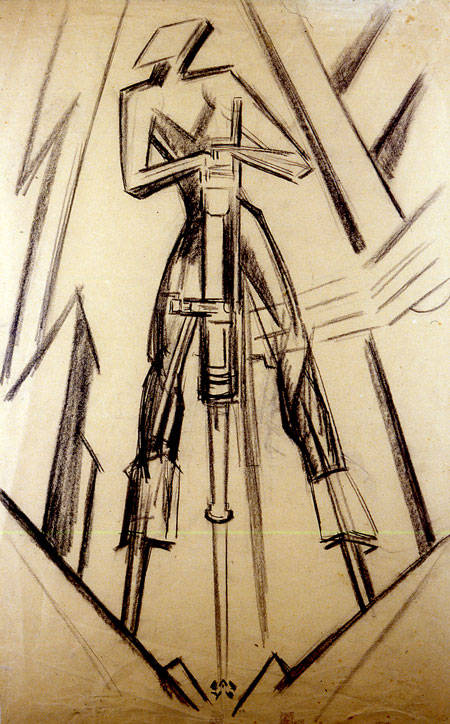The New Art Gallery, Walsall

Fig.1 Jacob Epstein, study for Rock Drill (c.1913). © The Estate of Sir Jacob Epstein. Image courtesy of the New Art Gallery Walsall, Garman Ryan Collection
With his Rock Drill sculpture, Jacob Epstein created a terrifying mechanised soldier. Following the First World War, however, he broke this work down into a mutilated torso. His Rock Drill reflects the tragic story of war and represents the debilitated, damaged body of the worker-soldier.
Epstein is one of Britain’s most prominent sculptors and one of his most notable works is The Rock Drill, 1913, depicted in a pencil drawing in the collection of The New Art Gallery, Walsall. This work has a complex story behind it: created c.1913, Epstein eventually disassembled the sculpture and turned it into a new work, Torso in Metal (1913-15). Rock Drill is commonly associated with Vorticism, an English art movement that celebrated machines and war. The original sculpture was a glorification of technology and mechanisation, but the decapitated Torso came to represent a broken Europe and the soldiers who had sacrificed themselves in the Great War.
The work tells the story of the impact of technological advancement on the human body. It depicts the augmentation of man with machine, in which technology is both an extension but also a constriction of the body. The original version shows the body made machine, elevated to a triumphant, heroic figure of war, while the subsequent broken Torso is the castrated, emasculated body that has been disabled by machine warfare. For the historian Hal Foster, images such as this are ‘haunted by the spectre of the damaged body of the worker-soldier' [1]. Rock Drill is the sculptural representation of this damaged body, initially exploited and made heroic but then damaged and emasculated.
Endnotes
[1] Hal Foster, ‘Prosthetic Gods’, Modernism/Modernity, 4.1 (1997), pp.5-38